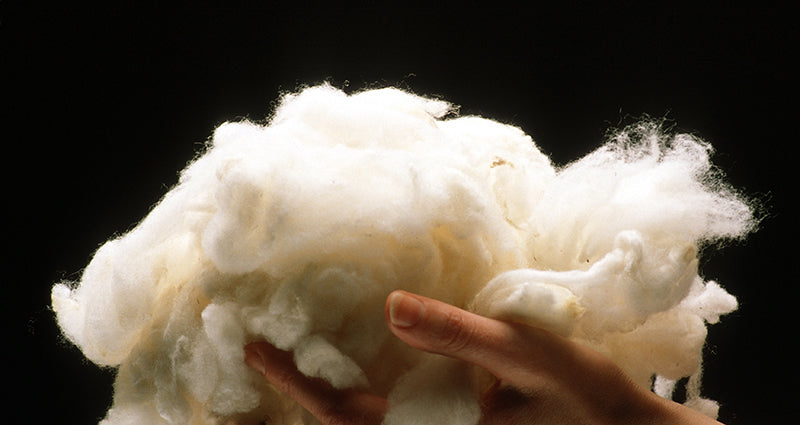Red Wine & Chocolate...
A little guide to help those of us with clumsy fingers & a passion for red wine and chocolate...
Contrary to popular belief, that stain on your favorite blanket, in most cases, needn’t ruin your day. We’ve put together some tips to keep you looking your best, even when your fork or glass may stray.
There’s a LOT of conflicting advice out there. After wading through and gathering data from extensive sources such as Woolmark, Martha Stewart and even Iowa State University (plus a good bit of grannie fixes), we’ve done our best to narrow down the most consistent bits (of advice).
THE DON'TS
Let’s first start with the big DONT’S of wool stain care
Knowing your fibre is key. Stain-removal may not be rocket science, but it is a science starting with the fibres. As a protein-based material wool along with its silk and cashmere cohorts, have their own set of stain removal rules.
- First and foremost, tend to it straight away. The quicker you deal with it, the better. Accidents don't always occur when the dry-cleaner is open or near-by.
- Always test any stain removal product on a discreet part of your blanket first. (State the obvious, but it pays to check discreetly first incase of any reaction to a particular product.)
- Never rub or scrub as this only embeds the stain further. Blot or sponge as much of the stain away as quickly as possible.
- NEVER use really hot water! Though effective for oil-based stains on other fabrics, it may actually help set stains on wool (especially milk and egg-based stains) Warm water washing plus a cold water rinse is best.
- When rinsing your blanket under water, always do so from the back side under low pressure. This forces the stain to travel back through the least amount of fabric possible.
- Based on our studies, the best washing detergent products for wool are pH neutral – (neither too acidic nor alkaline) and non-enzymatic in nature (i.e., free of enzymes, bleach or brightening agents). There are many products out there including Baby Shampoo and gentle dish washing liquids such as “Morning Fresh Neutral with Aloe”. General advice states never substitute with machine dish-washing detergents, as these can be highly alkaline.
- Do not use soap. Surprised? Like hot water, copious research has shown that a seemingly innocent bar soap or flakes can actually expedite stain setting (especially on coffee, red wine and tea stains).
- NEVER EVER use bleach on your wool as even diluted solutions can damage, discolor or weaken fibres.
- Remove your stain from any heat source, as this can help set the stain further.
Each food group is unique, here is a summary of we consider the top offenders!
RED WINE (TANNINS)
This also includes raspberries, tea, coffee and fruit juices such as tomato and orange…
- Water-based stains like wine will be absorbed more deeply by natural fibres. In case of a spill, it’s best to treat ASAP with water and a little pH-neutral dish-washing liquid (lubricration helps assist the wine’s exit). Do not use natural soap or dish-washing machine detergents. Being highly alkaline, these can and will set rather than remove tannin stains, as well as damage protein fibres.
- Gently sponge the area following with low-pressure rinses of cool water until gone.
- And the question of rubbing salt onto the stain – would not recommend this. Some sources warn this will set the stain permanently, with yet another highly regarded one suggesting that you can rinse using water containing salt. On a personal note, have used white wine vinegar the morning after, on my red wine stain, and watched with delight as it disappeared in front of my eyes!
GREASE & OIL
Think Christmas pudding, mayonnaise, butter, make-up, hand lotions…
- Begin by gently blotting to remove any excess. We then recommend pre-treating the stain by soaking the blanket in mild shampoo, or using a pH neutral dish-washing liquid that cuts grease. Follow this with a handwash in cool water.
- Another suggestion we discovered applies baking soda to absorb the grease (finish by shaking or brushing the baking soda off the blanket after a few minutes).
- Stain removal agents specific to the stain type are also recommended, but again test on a discreet area of the blanket as many of these agents are rather heavy duty in nature.
- An ‘unofficial remedy’ for removing lipstick is pre-treating by spraying WD-40 on the stain, blotting, re-spraying if necessary, then hand-washing. Try this method at your own risk!
PROTEINS
Think cream, eggs, mud, blood and baby formula…
- Again gently squeeze or blot fabric under running water to remove as much of the stain as possible. From here, we recommended gently dabbing the affected area with white vinegar (for blood) or diluted white vinegar followed with a gentle handwash with shampoo in lukewarm water.
CHOCOLATE
Researched especially for one particular client who had a very large chocolate mishap one occassion!
- It’s important to immediately, but gently remove any excess chocolate. A dull knife or a spoon will work (be careful not to spread the chocolate to the clean parts). Follow this with a low-pressure cold water rinse from the back side of the stain.
- No luck? From here, our best advice is to pre-treat the stain by soaking the garment in a mild shampoo, or using a pH neutral dish-washing liquid that cuts grease. Gently rub a liquid detergent into the chocolate stain area, wait a few minutes and then soak in cold water for a good 15 minutes, whilst gently rubbing to loosen the stain.
- Be careful not to be over zealous as you can “scrub rub” the garment into nicely formed pills if you use excessive force! Rinse thoroughly and all going well the stain will be gone.

